ARTICLE AD BOX
Gukesh Dommaraju shielded his eyes away from the rest of the prying world. The 18-year-old, who built his reputation on being utterly impassive as he blazed his way to the world champion’s throne, needed a brief moment to compose himself. Understandably so. He had, after all, lost his second successive game at the Norway Chess tournament on Tuesday, a defeat to compatriot Arjun Erigaisi coming right after the loss to world no 1 Magnus Carlsen the previous day.
The end of the Gukesh vs Arjun game was observed closely by world no 1 Magnus Carlsen, who had drawn his own game against Hikaru Nakamura, then had taken up a spot near Gukesh’s seat to get the closest possible view of the complex game between the two Indians. Never mind that Carlsen still had the Armageddon decider against Nakamura to play soon, he spent nearly five minutes peering over Gukesh’s shoulder at the board before quickly dashing out of the playing hall to grab a sweater. Then, he was back at his vantage point, engrossed in the game.
The start of the game had seen Gukesh and Arjun recreate a facsimile of Carlsen’s most famous game: his defeat to Hans Niemann at the 2022 Sinquefield Cup, which then led to the Norwegian GM pulling out of the event, then led to unprecedented — and ultimately unfounded — allegations of cheating against the American GM, a $100 million lawsuit and a feud for the ages.
The first seven moves from both Arjun, who was playing with White pieces, and Gukesh — 1.d4 Nf6 2.c4 e6 3.Nc3 Bb4 4.g3 O-O 5.Bg2 d5 6.a3 Bxc3+ 7.bxc3 dxc4 — had retraced the exact first seven moves of that Carlsen-Niemann game without a single deviation like it was following it on a map.
“In chess, surprisingly, identical games are not played. They deviate at some point,” five-time world champion Viswanathan Anand said on the official broadcast for Norway Chess while trying to explain why having two games with the same seven moves from both players is rare in chess. “If you look at the high-quality, tournament games, there would be tens of millions.”
On his 8th move, Arjun then played a new move, 8.a4 to force his opponent into long bouts of thoughts.
“He ran into my prep,” Arjun told The Indian Express simply after the win. “So I could just play without thinking and he needed to really think hard.”
Story continues below this ad
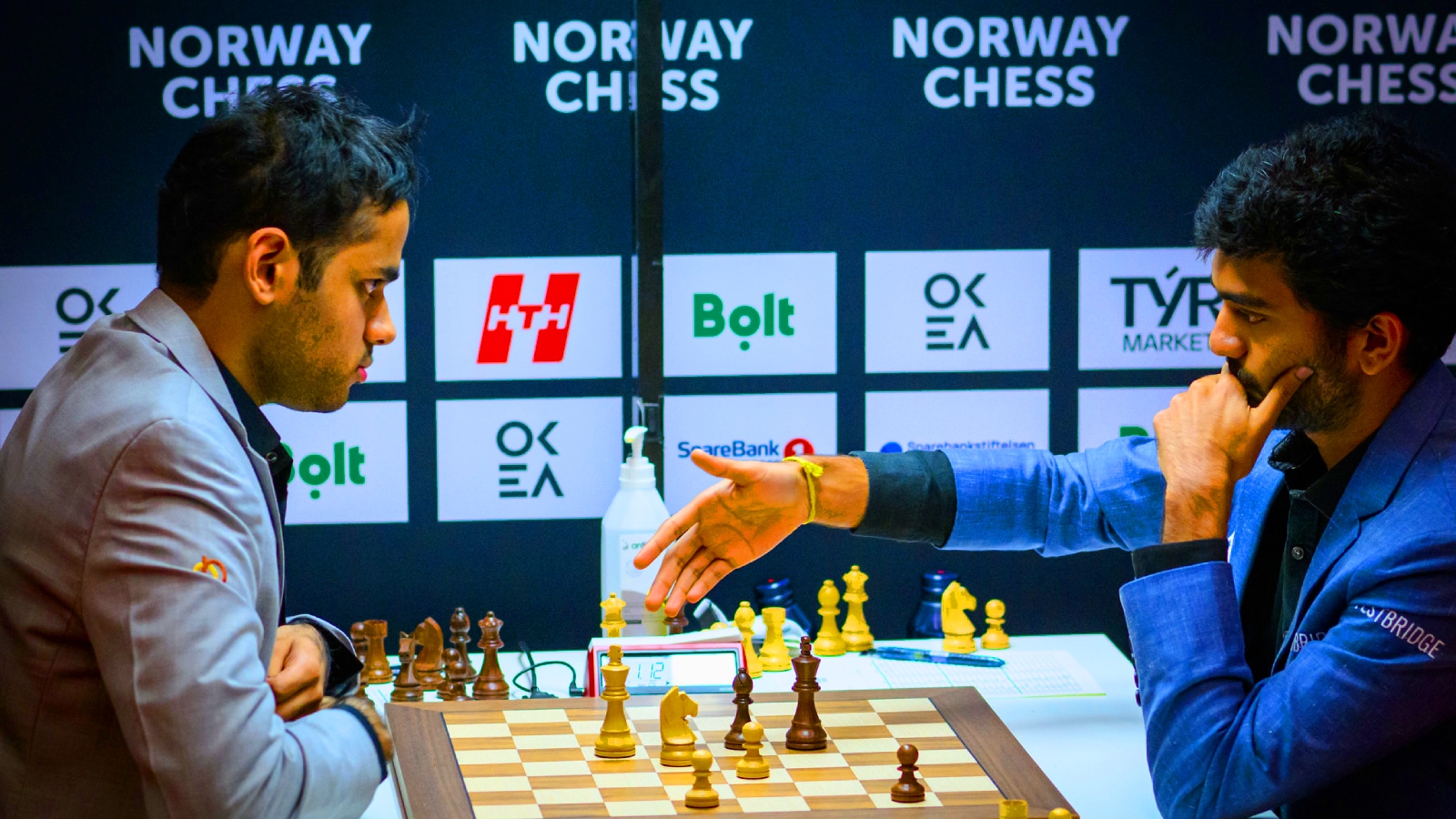 World Champion Gukesh resigns against Arjun Erigaisi in round 2 on Tuesday. (PHOTO: Michal Walusza via Norway Chess)
World Champion Gukesh resigns against Arjun Erigaisi in round 2 on Tuesday. (PHOTO: Michal Walusza via Norway Chess)
Arjun explained that his prep for the game against Gukesh had gone as deep as 16. a5. In those 16 moves, Arjun had clawed an advantage on the clock of almost an hour and 15 minutes.
“I’m a bit surprised to see Gukesh think (so long) this early on. This is the same opening as the famous Magnus versus Hans Niemann game from 2022 but maybe he is looking to deviate somewhere early,” Arjun said on his first visit to the confessional booth on Tuesday.
By the 8th move, Gukesh had burnt up 36 minutes while Arjun had consumed just two. By the 10th move, Gukesh had just 51 minutes left while Arjun, still blitzing away his movies from his prep, had one hour and 17 minutes on his clock. At the Norway Chess, players get two hours to make their first 40 moves with no increment. Then, they get just 10-second increments from move 41. For a player like Gukesh, who relies on calculation rather than intuition, the time controls at the event in Stavanger were expected to be particularly rough.
“Gukesh has been maligned perhaps recently with people talking about how he is the weakest world champion, this that, yada yada yada. It seems that he is not well-prepared for the line that Arjun played. He’s already down an hour on the clock. After the loss yesterday, he’s already feeling some nerves or lack of confidence. So I am very worried about his position for a second day in a row,” Nakamura said during a mid-game pit-stop into the confessional booth. “If Gukesh gets low on time here, with there being no increment until move 40, he’s just going to get blown away.”
Story continues below this ad
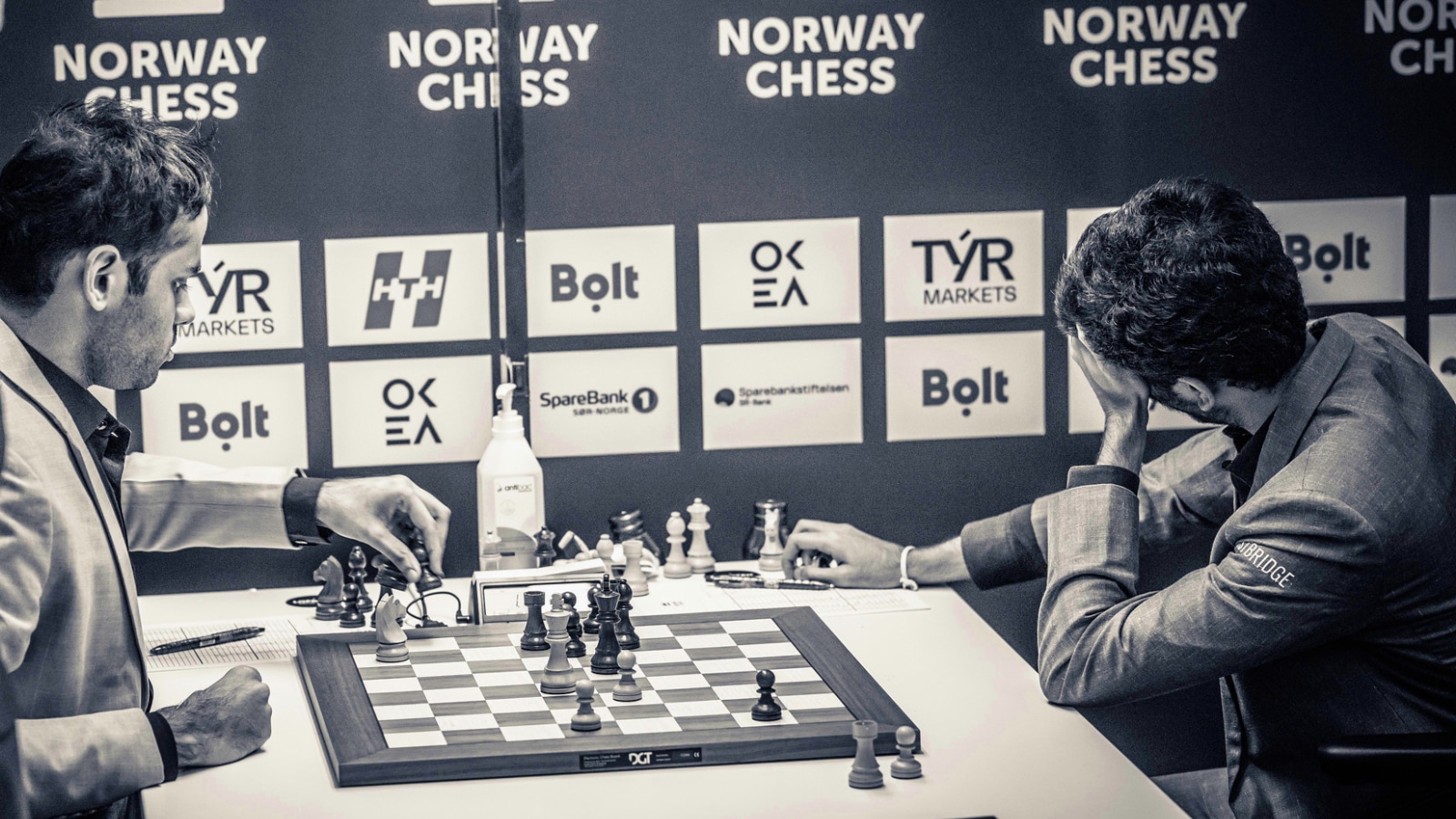 World Champion Gukesh reacts after resigning on Tuesday. (PHOTO: Michal Walusza via Norway Chess)
World Champion Gukesh reacts after resigning on Tuesday. (PHOTO: Michal Walusza via Norway Chess)
By move 22, Gukesh was down to 18 minutes while Arjun had just over an hour. But there was still plenty of drama in store. The engine’s evaluation bar indicated that Gukesh had erred by playing 26… Rb6. By move 29, Arjun was up a knight while Gukesh had an additional pawn. The engine then said that Arjun playing 40. Gxf5 was a blunder that surrendered any initiative he might have had until that point. Despite that, there were more errors from Gukesh which helped Arjun claim a victory.
How Arjun Erigaisi beat Gukesh
Asked to sum up his feeling in one word after the win by the Take Take Take app, Arjun said: “Relief.”
He later explained: “I thought I was winning in the middle game itself and if I screwed that up it would have really affected my thoughts.”
While the defeat to Carlsen had come after a blunder in the 46th move, against Arjun, Gukesh lost after 62 moves. The defeat to Arjun means that Gukesh is now the only player in the six-player open section to have no points against his name after two games.
Story continues below this ad
“It’s one of the strongest tournaments in history because you don’t often see the top 5 players in an event together,” Arjun added.
Despite the strength of the field, Arjun finds himself at the top of the standings.



.png)
.png)
.png)

















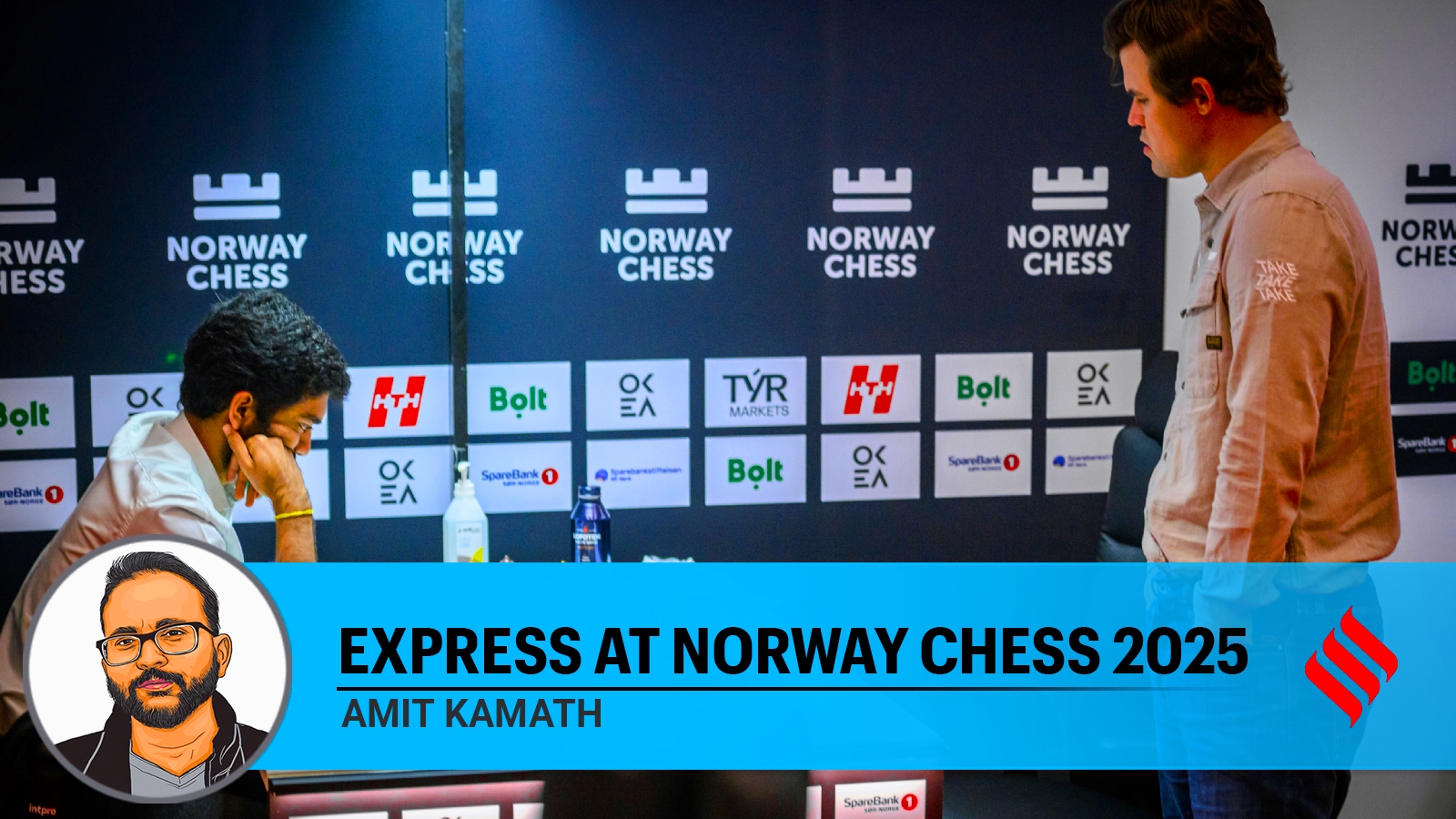
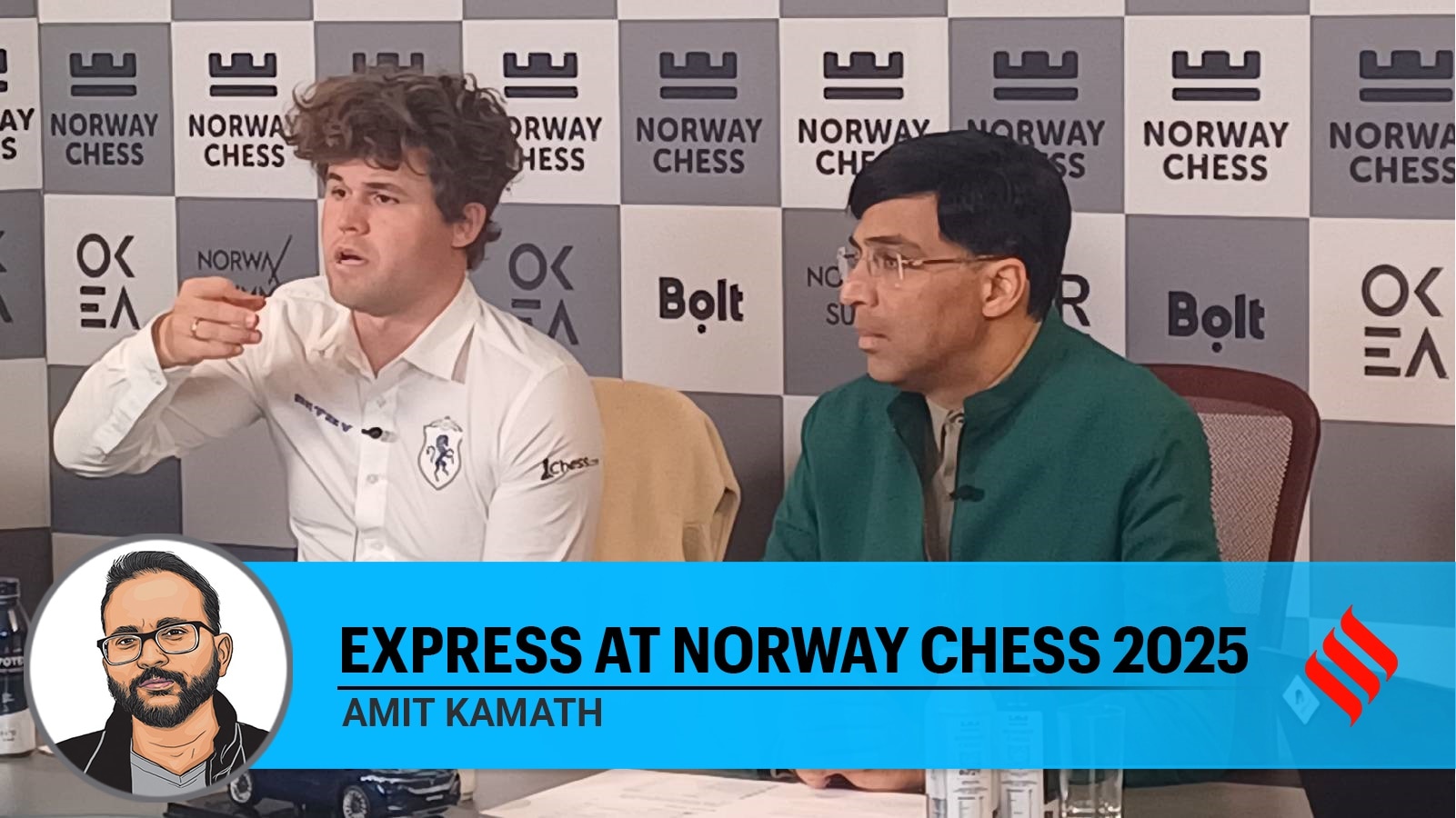
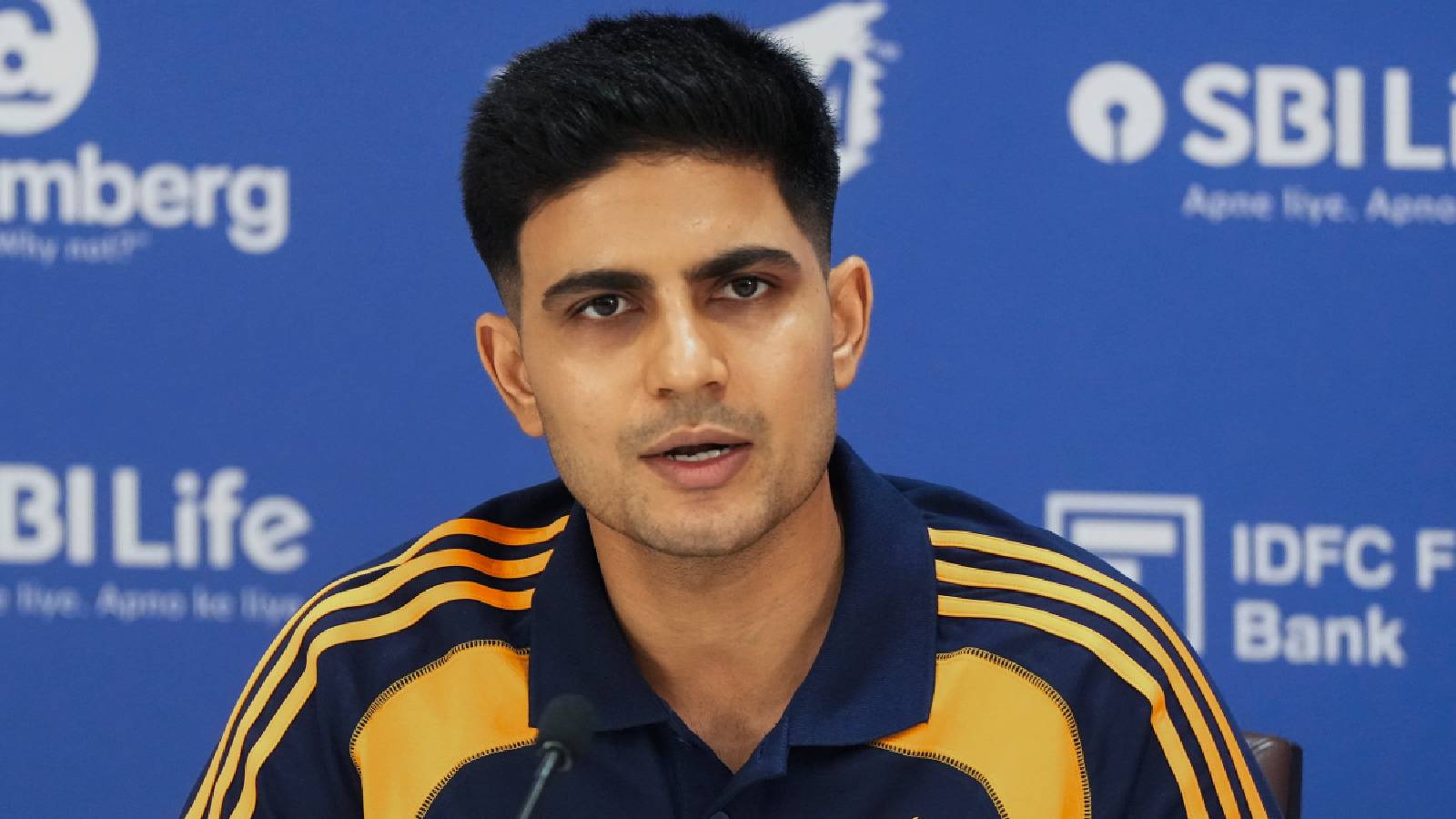






 English (US) ·
English (US) ·